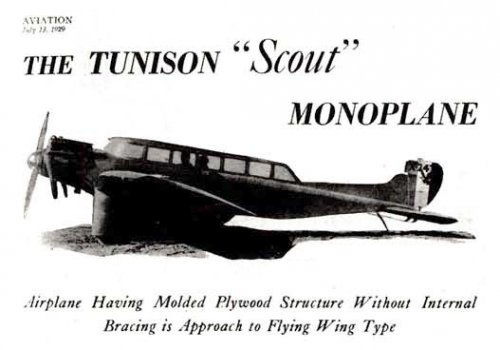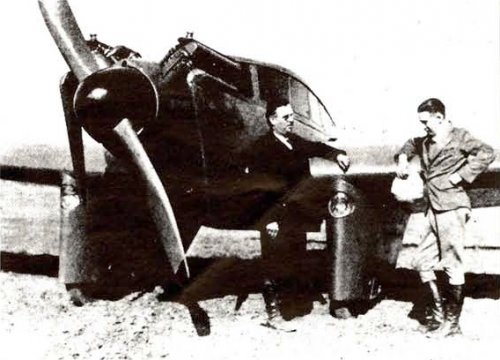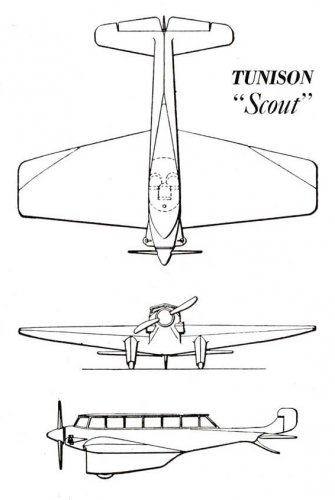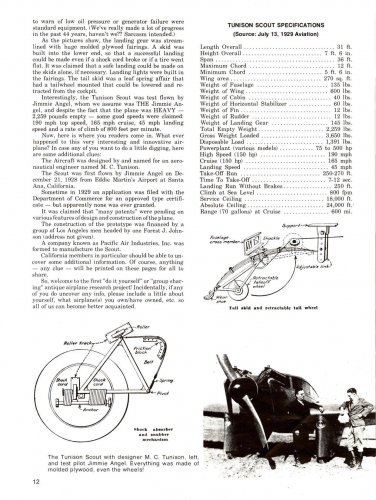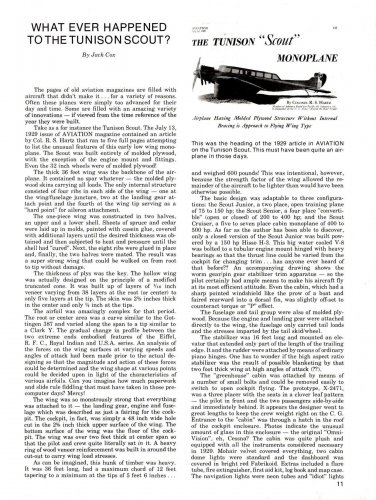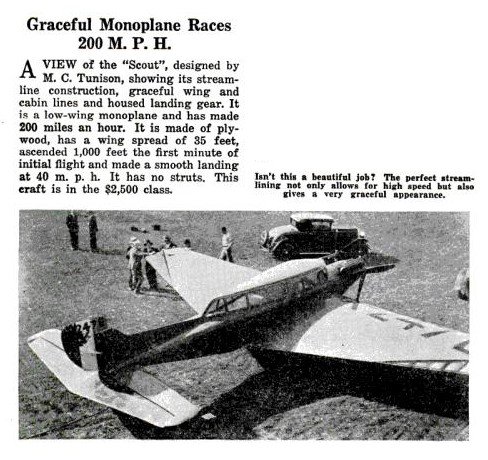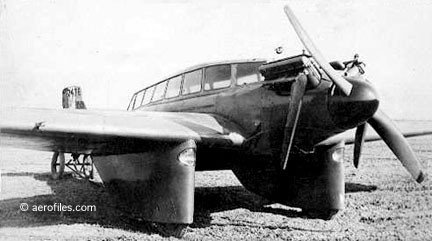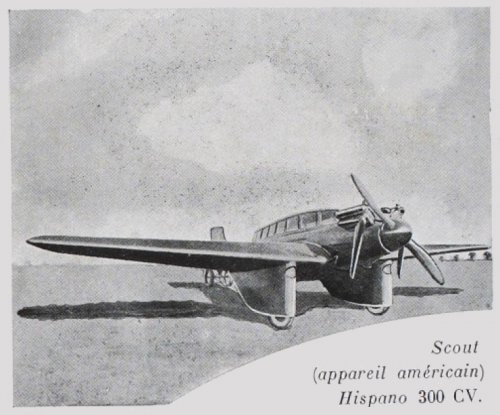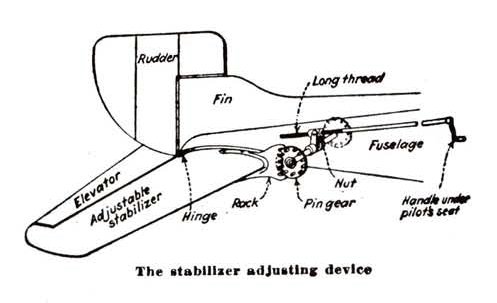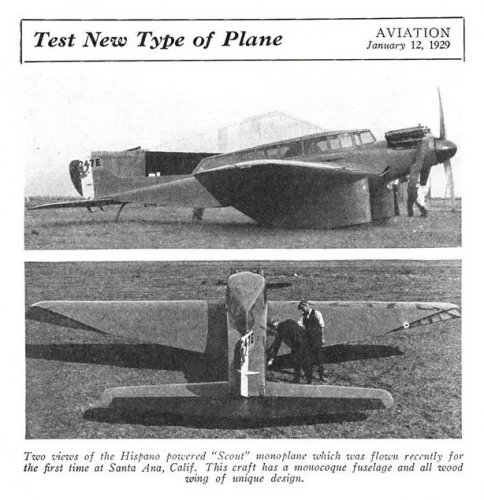- Joined
- 25 June 2009
- Messages
- 14,767
- Reaction score
- 6,195
The Tunison Scout of 1929 [X2471] was designed by and named for an aeronautical engineer named M. C. Tunison. It was an early low wing monoplane built entirely of molded plywood, with the exception of the engine mount and fittings. Even the 32-inch wheels were of molded plywood! The thick 36 feet wing was the backbone of the airplane. It contained no spar whatever — the molded plywood skins carrying all loads. The only internal structure consisted of four ribs in each side of the wing — one at the wing/fuselage juncture, two at the landing gear attach point and the fourth at the wing tip serving as a "hard point" for aileron attachment. The Scout was 36 feet long, had a maximum chord of 12 feet tapering to a minimum at the tips of 5 feet 6 inches. the airfoil was amazingly complex for that period.
The one-piece wing was constructed in two halves, an upper and a lower shell. The wing was so strong that everything was attached to it — the landing gear, engine and fuselage which was described as just a fairing for the cockpit, a 48-inch wide hole cut in the thick upper surface of the wing. The bottom surface of the wing was the floor of the cockpit. The wing was over two feet thick at center span so that the pilot and crew quite literally sat in it. A heavy ring of wood veneer reinforcement was built in around the cut-out to carry wing load stresses. All of this made for a heavy aircraft.
The construction of the prototype was financed by a group of Los Angeles men headed by one Forest J. Johnson. A company known as Pacific Air Industries, Inc. was formed to manufacture the Scout, and some time in 1929 an application was filed with the Department of Commerce for an approved type certificate, but none was ever granted. It was claimed that "many patents" were pending on various features of design and construction of the plane.
The basic design was adaptable to three configurations: the Scout Junior, a two-place, open training plane of 75 to 150 hp; the Scout Senior, a four-place "convertible" (open or closed) of 200 to 400 hp; and the Scout Cruiser, a five- to seven-place cabin monoplane of 400 to 500 hp. Apparently only the prototype shown, a closed version of the Scout Junior, was built, powered by a 150 hp Hisso H-3.
Source: Vintage Airplane Vol. 1 N°8
The one-piece wing was constructed in two halves, an upper and a lower shell. The wing was so strong that everything was attached to it — the landing gear, engine and fuselage which was described as just a fairing for the cockpit, a 48-inch wide hole cut in the thick upper surface of the wing. The bottom surface of the wing was the floor of the cockpit. The wing was over two feet thick at center span so that the pilot and crew quite literally sat in it. A heavy ring of wood veneer reinforcement was built in around the cut-out to carry wing load stresses. All of this made for a heavy aircraft.
The construction of the prototype was financed by a group of Los Angeles men headed by one Forest J. Johnson. A company known as Pacific Air Industries, Inc. was formed to manufacture the Scout, and some time in 1929 an application was filed with the Department of Commerce for an approved type certificate, but none was ever granted. It was claimed that "many patents" were pending on various features of design and construction of the plane.
The basic design was adaptable to three configurations: the Scout Junior, a two-place, open training plane of 75 to 150 hp; the Scout Senior, a four-place "convertible" (open or closed) of 200 to 400 hp; and the Scout Cruiser, a five- to seven-place cabin monoplane of 400 to 500 hp. Apparently only the prototype shown, a closed version of the Scout Junior, was built, powered by a 150 hp Hisso H-3.
Source: Vintage Airplane Vol. 1 N°8

